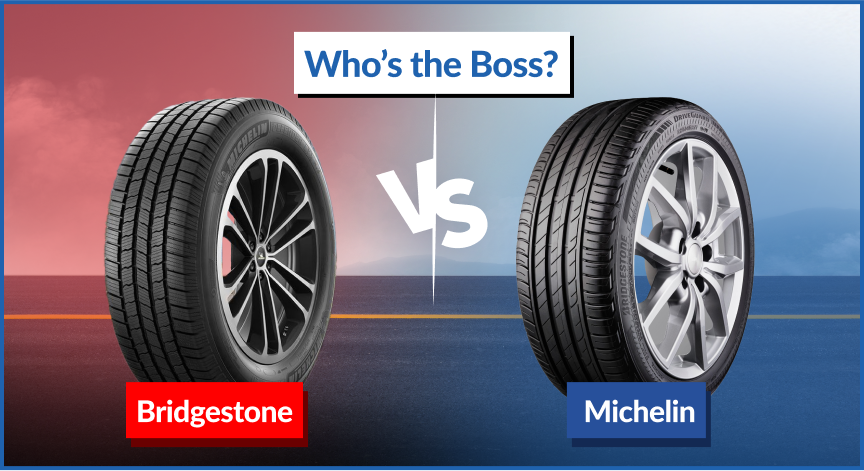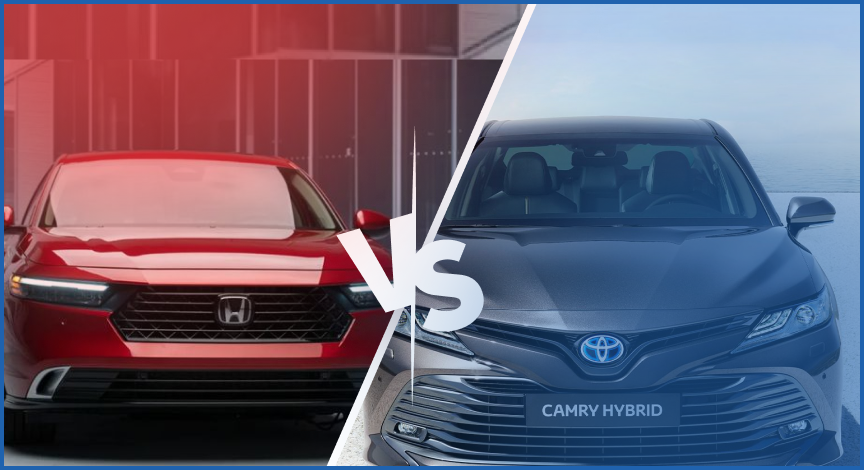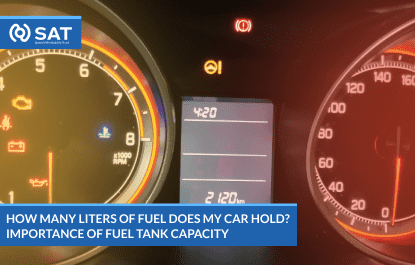
Bridgestone Vs. Michelin Tires – Who’s the Boss
Bridgestone and Michelin are the two industry giants of the tire market.

The Honda Accord and Toyota Camry are popular choices among midsize sedans. Both models have been bestsellers for decades, consistently establishing standards for comfort, dependability, and performance. While the Accord and Camry have developed greatly since their inception in the 1980s, they still represent the pinnacle of what a mid-size sedan should be.
In this blog post, we’ll delve into a detailed comparison of the Honda Accord vs Toyota Camry, highlighting their unique features and strengths in the modern market.
You have probably always heard this question, or even asked it. SAT’s expertise brings you a detailed comparison of the two, explaining the sporty and sleek design of the Accord, and the comfort of the Camry, making it a reliable option. Both cars are fan favourites, and the final decision is yours, to choose whichever suits you best!
Honda Accord offers an attractive, consistent, and comfortable driving experience. The design fits perfectly with the dynamic performance of the Accord. Its sharp edges and contrasts from sculpted building surfaces add a remarkable aesthetic appeal. The LED headlights feature a dual low-beam design, and the tapered LED tail light enhances its modern look.
It offers a sporty style, further accentuated with 19-inch matter-black alloy wheels. Honda Accord also has a rear diffuser and gloss-black rear decklid, giving it a sporty feel.
Toyota has always prioritized build quality and durability, and the Camry is no exception. The aggressive lines of the metallic front grille give the car a remarkable feel. The Toyota Camry also comes with an elegant sunroof, which adds to the class of this vehicle.
The BI-LED combination headlights extend outward from the slim upper grille, providing a stylish accent. Also, the LED taillights feature gives an eye-catching shape that flows into the rear bumper.
Honda’s interior design is always focused on improving the standard of customer experience. The Accord’s cabin is inspired by the spaciousness of a concert hall, offering a sense of openness and excellent visibility. The proportion of all new Accords is near to a rear-wheel drive. The exhilarating and wide visibility is top-class.
The latest model of the Honda Accord, the 2024 Accord offers a concert hall-like cabin space, with ample room for passengers and cargo. Notable interior features include a 10.2-inch digital driver display, a 7-inch touchscreen, and advanced connectivity options like Apple CarPlay and Android Auto
This vehicle is available in various color options to suit every driver’s preference. The possibilities include Canyon River Blue Metallic, Crystal Black Pearl, Lunar Silver Metallic, Meteorite Gray Metallic, Premium White Pearl, Radiant Red Metallic, Still Night Pearl, and Urban Gray Pearl.
The advanced interior features present on the Accord include:
The Toyota Camry is a combination of practicality and comfort with its impressive cargo space. Its seating capacity of 5 passengers offers excellent space for everyone to enjoy their ride. The 2024 Camry includes a variety of tech features, such as a floating multimedia screen available in 7-inch or 9-inch sizes, wireless charging, and dual-zone automatic climate control. The Camry’s interior is designed with high-quality materials and offers options for leather-trimmed seating and ambient lighting.
The Toyota Camry is available in a wide range of color options to suit every driver’s preference. The possibilities include Ash Fabric, Ash leather, Black Fabric, Black leather, Macadamia fabric, Macadamia leather, and Cockpit red color.
The advanced interior features present on the Camry include:
Camry has a 2.5-liter, four-cylinder engine that produces 178 horsepower and 170 pounds of torque. You can also choose the 3.5-litre V6 engine that generates 268 hp with 248 lb-ft of torque. It comes with an automatic transmission that enhances your driving experience.
The latest model, the 2024 Camry includes a 2.5-liter four-cylinder engine and a 3.5-liter V6 engine, delivering up to 301 horsepower. This also comes with a hybrid option, increasing fuel efficiency and providing a smooth experience.
The base engine and hybrid engine are available in LE, SE, XLE, and XSE trims, and the V-6 is available in XLE, XSE, and TRD trims.
Honda Accord has a standard 2.4-liter four-cylinder engine that generates 192 horsepower and 260 Nm of torque. Its sportier variant can reach 189 hp with a dual exhaust system. It has a six-speed automatic transmission with a CVT variant. It also has an Econ and Normal mode, a braking system that includes electronic brake distribution (EBD), and an Anti-lock system (ABS).
The latest Accord offers the Powertrains choice- with a 1.5-liter turbocharged engine with a hybrid option for a more eco-friendly approach.
The basic trim levels, including LX and EX, have a nonhybrid turbo engine, while higher trims, including Sport, Sport L, Sport Touring, and EX-L, come only as hybrids.
When it comes to the Honda Accord vs Toyota Camry reliability comparison, we can see the two vehicles go head-to-head, boasting features that one up each other:
The 10-inch color head-up display makes keeping an eye on the road easier. It comes with advanced safety and driver assistance features that ensure peace of mind for the driver, including:
Toyota is leading the way in the development of driver-assistance systems. All Camry models are equipped with advanced safety features of the Toyota Safety Sense 2.5+, including:
Also, all Camry trims have standard backup cameras for increased safety.
The Honda Accord and Toyota Camry are great choices depending on your preferences and what you value the most. Both vehicles have a turbocharged four-cylinder engine with hybrid powertrains, offering remarkable fuel efficiency.
Whether you prefer the Accord’s sporty design and sleek technology, or the Camry’s comfort and safety, it is safe to say both vehicles offer a dynamic and reliable experience. SAT Japan is the leading used cars for sale supplier with a wide variety of specifications to offer, including fuel efficiency and safety features. Whichever one you choose, you will be driving a top-tier sedan that is your life companion.

Bridgestone and Michelin are the two industry giants of the tire market.

Considering the recent developments in the world order, oil prices have increased significantly over the last decade. During such times, being well-researched about your car fuel tank and its features can be extremely useful in cost-cutting. Knowing about your car’s fuel capacity may not seem too significant at face value, but such a basic factor […]

Subaru is widely known for being a highly reliable manufacturer of vehicles that are simultaneously safe and stylish. Because of Subaru Models‘ performance and reliability, these vehicles have a loyal fanbase that swears by them. However, there are some limitations with their boxer engine, and one of the faults in some Subaru vehicles is the […]